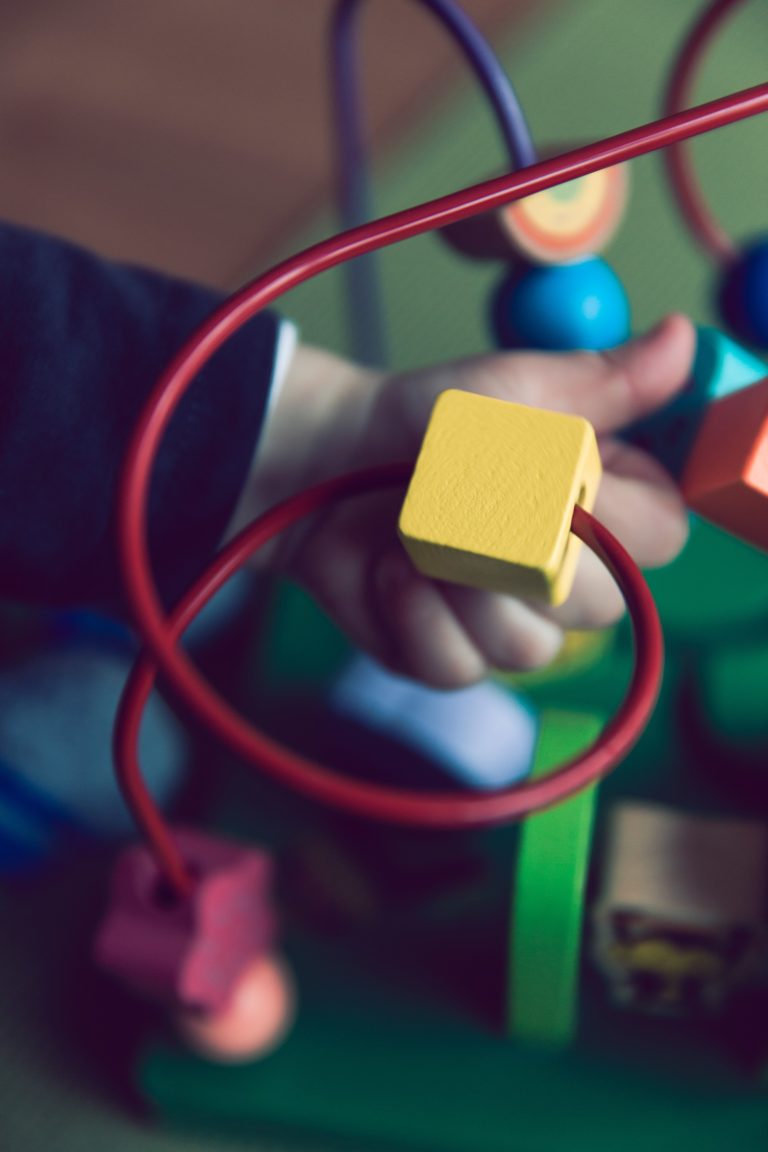
What is motor skills after all? If you look in the dictionary, you will find all of the actions of the skeletal muscles under motor skills. Say everything our body and muscles can do. And further differentiation is made between fine and gross motor skills.
As the name suggests, fine motor skills are fine, targeted, precise and coordinated movements.
For example, eating with chopsticks, drawing or writing with a pen, painting a picture precisely, threading pearls with a needle or cutting a complicated figure.
Then what is the difference between fine motor skills and dexterity? Is there one at all? Yes, fine motor skills are not just limited to hands and fingers. Fine motor skills also include picking up marbles with your foot, walking in crowds without bumping into anyone, but also speaking and facial expressions.
It is not easy for your child to bring both his arms, hands and feet into the desired position within millimeter precision. Even us adults and especially the older ones sometimes find it just as difficult to hold a knife correctly or to hold their heads up.
I remember a visit to a restaurant in America. We had used the lunch buffet in the restaurant and started eating with knives and forks when some other guests looked over at us and then took a knife in their right hand. It wasn’t long before they put the knive back on the table, changed the fork from left to right, and ended the meal without touching the knife a second time.
A newborn cannot do anything. They are born without any guidance. Your newborn first has to discover how everything works. It is up to you to try everything yourself and to work out and practice everything yourself step by step. Practice creates masters and no progress without failure.
With every newborn and also in our later life, connections of the nerves must first be linked in the brain. And through constant repetition, our little ones get better and better. It is therefore important to bring time and patience to the development of fine motor skills.
When our little ones train fine motor skills, they train other skills and abilities at the same time. Fine motor skills often go hand in hand with focusing, remembering, problem solving behavior, being creative, coordinating, developing imagination and being skillful.
If you train one skill, other skills develop which are linked together. This does not mean that all networked skills develop at the same speed or to the same extent.
Since facial expressions and language are hardly possible without our fine motor skills, they also form the basis for our communication and our social charisma. Children who already master these well in kindergarten age also have a decisive advantage in later life.
At the latest at 1st grade, children should be able to hold and use a pen securely and firmly. This is characterized by the typeface and the character. Likewise when speaking safely and tying shoelaces.
Do you need extra toys to promote your child’s fine motor skills?
No! You can practice fine motor processes in everyday life at home. A next step can be simple aids that you already have in the house or toys that can be made by simple means yourself.
In order to promote fine motor skills in your child, you do not have to spend money or constantly buy new things.
Of course there are lots of toys that your child can really enjoy and promote and train fine motor skills at the same time. If you or friends of yours are looking for a gift for your child, here are some suggestions.
For babies, things that invite you to touch are suitable. If it is colorful and also rattles or squeaks, you are on the right path. Make sure it is not too big or heavy. Good ideas for your loved one are rattles, rings, grab balls and of course cuddly toys.
From about a year your children will stack everything possible and impossible. Stacking games are not only fun and promote fine motor skills, they also help in the development of imagination and creativity in your child.
Our daughter started playing with blocks at around the age of 18, also a variant of stacking games and a classic. There are no limits to your child’s imagination. Will it be a tower, a bridge, a house, a car or an elevated road. As with the stacking games, in addition to promoting fine motor skills and creativity, we also find analytical and strategic thinking. And not to forget the first basic laws of physics and the ability to concentrate.
At around 2 years old, ball and marble runs and their variants for different ages are another way to promote and train your child’s fine motor skills. The most suitable are lanes in which your child has to do more than pick up the ball and put it somewhere up there. Or how about making a web out of kitchen rolls and toilet paper rolls yourself, painting and pasting?
Building blocks also fall into the same age group; themed play worlds not only promote your child’s fine motor skills but also their creativity, imagination and ability to concentrate.
If your child loves screwing, building and hammering, construction toys can also be a lot of fun and further promote fine motor skills. Because here your child can really screw, turn, drill, push and pull.
Threading games are another alternative to promote fine motor skills and concentration.
There are puzzles for your child on the subject of patience, problem solving, strategic and analytical thinking, concentration, remembering and creativity. Starting with 2-3 piece wooden puzzles up to several hundred pieces 3D objects.
Another constant companion for your child can also be plug-in games and motor skills loops, as well as endless combinations of them.
What your child can also promote in his creativity are musical instruments. After recent studies instruments also stimulate linguistic and mathematical skills.
The xylophone or drum are indispensable in this category.
Do you remember what your favourite toy was that promoted your fine motor skills?
Write it down in the comment section.
Subscribe To Our Newsletter
Join our mailing list to receive the latest news and updates.

Recent Comments